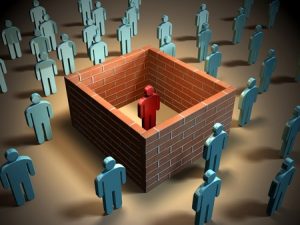 Jeanine Doherty, Au.D., M.Phil., M.B.S, B.Soc.Sci.(Hons.) of Hearing Excellence
Jeanine Doherty, Au.D., M.Phil., M.B.S, B.Soc.Sci.(Hons.) of Hearing Excellence
Christchurch, New Zealand
Two models of disability, the medical model and the social model, currently represent the opposing ends of the continuum of what defines disability (Berger & Lorenz, 2015).
The medical model sees disability as an individual’s bodily event and so concentrates on aetiology, diagnosis, prevention, and the treatment of the physical, sensory and/or cognitive impairments. Past scholars of disability often took this negative deviance medical approach; bioethicists and eugenicists have spent most of their energy on justifying the morality of preventing or even eliminating people with disabilities by the use of prenatal testing and abortion, or by withdrawal of care (Parens, 2001).
The social model of disability, at the other end of the spectrum, moves away from the impairment itself to consider the socially imposed barriers for the disabled, such as inaccessibility and unequal rights. It also considers the prejudicial attitude (i.e., stigma) that is constructed around any disability and results in sub-ordinate social status and a devalued life (Berger & Lorenz, 2015; Bickenbach et al., 2014). The social model evolved from the disability rights movements in the UK and USA in the 1960’s and 70’s, and carries the notion that a society should embrace all members and address socially imposed barriers.
Regardless of which model is used, stigma seems to be a universally understood experience. Stigma occurs as a process by which people stereotype, label, judge, and then discriminate against others who are different (While & Clark, 2010) and so they spoil any sense of normal identity for the other person.
Goffman (1963) outlined three causes of social stigma:
- overt, external deformations;
- personal trait deviations such as mental disorder or addiction;
- tribal/cultural deviations from a norm in terms of physical appearance like skin colour, dress style, religion, or behaviour.
Goffman added that stigma is the phenomenon whereby an individual with an attribute is deeply discredited by their society and therefore rejected as a result of the attribute.
Understanding Our Reactions
We are drawn to the unanticipated and the inexplicable in an effort to make sense of the experience, a universal part of our cognitive architecture that natural selection has bequeathed us (Garland-Thomson, 2006). We also experience aversion to others who do not fit into Goffman’s (1971) concept of normalcy. This aversion is a primitive response, demonstrated at the minimum with glancing or staring as a sifting mechanism to define safe or “otherness” status among those around us. For example:
I used to travel with a fellow Board member who had one of the first cochlear implants in New Zealand, which is very obvious as he has no hair to hide it. Walking through airports with him was fascinating as I watched others observe, try to decide what it was, understand/comment to their fellows about it and then finally return to their own activities. Before it could be socialised out of them, children had no concern about direct enquiry of David – “What’s that thing on your head, mister?” Being stared at by an adult can mean a lack of understanding, or at worst a social disregard, but children have the “curiosity excuse,” and he loved to take the pieces off his head and explain them to the fascinated child, while the parent often squirmed in embarrassment.
Although on the surface innocuous, staring is actually a strong reaction towards another person and excites the brainstem’s primitive level neural activity (Garland-Thomson, 2006), which is part of our fight or flight system. Stigmatic judgements are made with such fast glances and decisions. The inclination to stigmatize others has long been documented; for instance, in Roman times thieves and slaves were visibly tattoed to identify them as non-equal human beings.
Stigmatising another person can not only make the stigmatised person suffer negative consequences but can, conversely and perversely, enhance positive feelings of membership of the stigmatising tribe by the rise in self-esteem and sense of power that “doing others down” can bring (Falk, 2001). This tribal group-think against the stigmatised person has been used to justify terrible attacks seen worldwide, in which a stigmatised person – often intellectually disabled — holds little value and so can be beaten or killed as they are considered sub-human.
 The Impact of Labels
The Impact of Labels
When a label or stigma is applied to a person/group, there is a surrounding negativity or taint which engenders feelings of lesser worth in those subjected to the labelling. Being the subject of stigma can adversely affect the behaviour of the stigmatised by changing their emotions and beliefs (Major, 2005). The stigmatised person can become isolated, and then depression and lack of self-esteem can follow (George, 2015). Internalised stigma also leads to decreased hope and self-efficacy, and a poorer general quality of life (Nabors et al., 2014). This impact is not unique to hearing loss – just think about our seniors who have age labels, hearing loss, vision loss, cognition loss and physical disability labels to carry.
Can We Diminish the Impact of Stigma?
We have added the notion of stigma to our audiology knowledge basket, but can anything be done to diminish its impact? In our clinic, after fitting older children with hearing aids for the first time at maybe 5-6 years old, we learned they were often subject to teasing by other students at their school. One of the best responses we decided together was to answer the taunt of “deafy, deafy 4 ears!” with a simple “so what, hearing ears?” The bullying party had no answer and derived no pleasure as the hearing impaired child was not crying or upset but just stating a fact and felt strong in that position. There was no room for patronising, or pity, and so the teasing group lost its power. This stigma resistance ability is linked to greater self-esteem and to lesser degrees of internalised or self-stigma (Nabors et al., 2014).
Developing “stigma resistance” is not easy when the world is slow to change. Despite more inclusive schooling practices, a UK report (Parry, 2014) finds that at least two-thirds of people reported feeling uncomfortable or awkward talking to any disabled people. The most uncomfortable group was the Millennial generation born 1980-2000, who often would have attended integrated schools. Much of their discomfort was reported as a fear of appearing patronising, or of saying the wrong thing. I suggest this is more a lack of life experience and for many a fortunate lack of not yet having to face disability and illness in their peer group or families. Most of us could benefit from access to individuals with any sort of difference, for it is only with practice that ease in communication will arise. We learn about colonialism, women’s rights and sexual identity in school but no-one learns about any disability there – unless there is a personal contact with someone who has a disability in the school or class, family or neighbourhood.
Our patients will likely be sensitive to potential stigma, even if they do not mention it. Fear of stigma could even prevent them from moving forward with hearing help. We would be wrong to assume that patients are resilient or unaffected by their perceptions of other people’s attitudes. What are the counseling skills involved in discussing stigma openly and productively? Certainly avoiding it as a taboo topic does not help.
Where is the Research?
While examining the available research on stigma and disability, Chaudior et al. (2013) identified a relationship between the detectability of the disability and the amount of research conducted. They delinated two groups of research subjects:
- the discredited disabled, whose disability can be obviously detected and so stigmatised, and
- the discreditable disabled, who have undetectable but potentially stigma-inducing conditions.
More research has been conducted with the discredited than the discreditable, since the potential concealability of discreditable disability means that study conditions can be difficult to control. Unfortunately, this latter group would include persons with hearing loss. Hearing loss itself is invisible, of course; hearing aids provide visibility and “detectability” but they can be so discreet, or assumed to be a cure, that the disability associated with hearing loss can be misconstrued. Hearing impaired people routinely experience resent from others who assume they are strange or snobs because they just talked to them across the street but were ingnored, yet yesterday they were chatting to this same speaker up close very nicely.
With the growth of neuroscience research, we can only hope that increasing understanding of our own cognitive biases can improve our knowledge of ourselves and others (Taylor, 2014). In the meantime, we must campaign for investments in relevant education for health practitioners to effectively address stigma, accompanied by changes in the governance perspective of service provision (While & Clark, 2010). Werner (2015) adds that, in order to reduce troublesome attitudes or behaviours, they have to be replaced with positive ones, yet to be defined. Audiologists have a profound responsibility: to help patients and society understand and ultimately de-stigmitize hearing loss.
REFERENCES
Berger, R. A. & Lorenz, L.S. (2015). Disability and qualitative inquiry. Surrey, UK: Ashgate Publishing.
Bickenbach, J. F., Felder, F. & Schmitz, B. (2014). Disability and the good human life. Cambridge: Cambridge University Press.
Chaudoir, S.R., Earnshaw, V. & Andel, S. (2013). “Discredited” versus “discreditable”: understanding how shared and unique stigma mechanisms affect psychological and physical health disparities. Basic Applied Social Psychology, 35(1), 75-87.
Falk, G. (2001). Stigma: how we treat outsiders. Retrieved from ttp://www.buffalostate.edu/sociology/falkg
Garland-Thomson, R. (2006). Ways of staring. Journal of Visual Culture, 5(2), 173-192.
George, A. (2015, October 3). Am I normal? New Scientist, pp. 33-34.
Goffman, E. (1963). Stigma: notes on the management of spoiled identity. New York: Prentice-Hall.
Goffman, E. (1971). Relations in public: microstudies of the public order. New York: Basic Books.
Major, B. A. (2005). The social psychology of stigma. Annual review of psychology,56(1),393-421.
Nabors, L.M., Yanos, P.T., Roe, D., Hassan-Ohayon, I., Leonhardt, B.T., Buck, K.D and Lysaker, P.H. (2014). Stereotype endorsement, metacognitive capacity and self-esteem as predictors of stigma resistance in persons with schizophrenia. Comprehensive Psychiatry, 55, 792-798.
Parens, E. A. (2001). Prenatal testing and disability. Washington DC: Georgetown University Press.
Parry, L. (2014, May 8). Two-thirds of us are uncomfortable talking to disabled people. Retrieved from Mail Online: www.dailymail.co.uk/health/article-2623225/
Taylor, J. (2014, April 28). We’re All Disabled. Retrieved from Huffington Post: http://www.huffingtonpost.com/dr-jim-taylor/were-all-disabled_b_5207412.html
Werner, S. (2015). Stigma in the area of intellectual disabilities: examining a conceptual model of public stigma. American Journal on Intellectual and Developmental Disabilities, 120(3), 460-475.
While, A.E. and Clark, L.L. (2010). Overcoming ignorance and stigma relating to intellectual disability in healthcare: a potential solution. Journal of Nursing Management, 18, 166-172.
